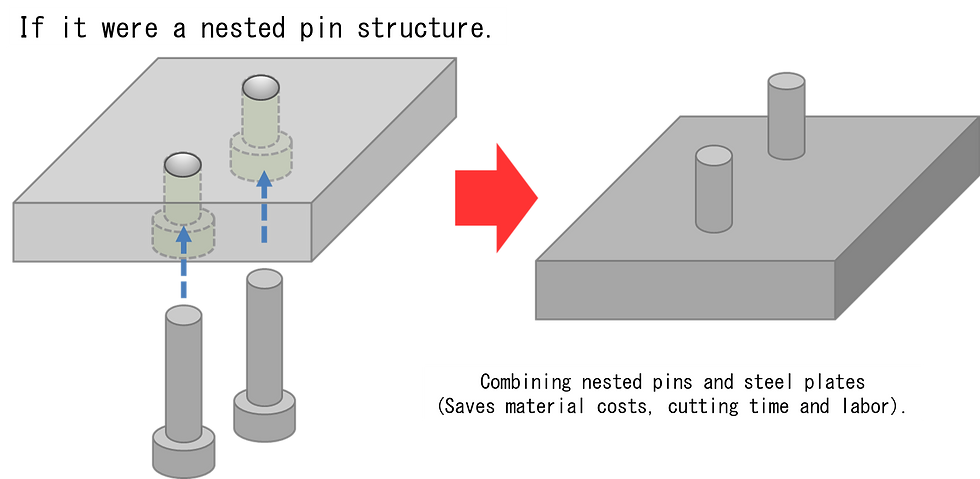Glossary: What is "nesting" in molds?
- SANKO GOSEI
- Jul 19, 2023
- 2 min read
Updated: Aug 1, 2023
Insert" in the mold is a term that refers to a part of the mold structure and arrangement.
If it is a simple product shape, it may be made by engraving the shape directly into the mold.
Many of them are nested to facilitate cutting and save material costs.
Nests are also used to position other parts in a mold to work together or to perform a specific function.
Specifically, nesting is used in the following situations:
Combination of core and cavity: A typical mold structure has a core (the part that forms the internal shape of the product) and a cavity (the part that forms the external shape of the product). Nesting allows you to insert additional parts between the core and cavity to create products with more complex internal geometries or special features.
Slide and lifter mechanisms: Slides and lifters are special mechanisms that operate inside the mold. They are used to form part of the product and move when the mold is opened, closed or extracted. Slides and lifters are typically nested within the mold and move as needed.
Inserts and Inserts: When dealing with inserts or inserts that are intended to be placed with the plastic part in the mold, nesting is often used to hold them in place. I have. This allows the insert to be precisely positioned and integrated with the part.


Nestings play an important role in the design and manufacture of molds and are essential when creating products with complex shapes and internal features. Mold construction and placement affect the quality and shape accuracy of the molded part, so the nest design is done carefully.








![[Verification Experiment] Measurement of Gas Volume within Moulds Using the Water Displacement Method](https://static.wixstatic.com/media/217ce4_26c165f2dade4d15bf43c295c92471ed~mv2.png/v1/fill/w_747,h_599,al_c,q_90,enc_avif,quality_auto/217ce4_26c165f2dade4d15bf43c295c92471ed~mv2.png)

Comments